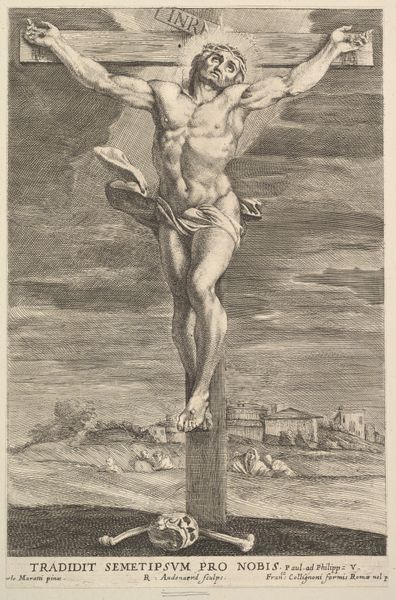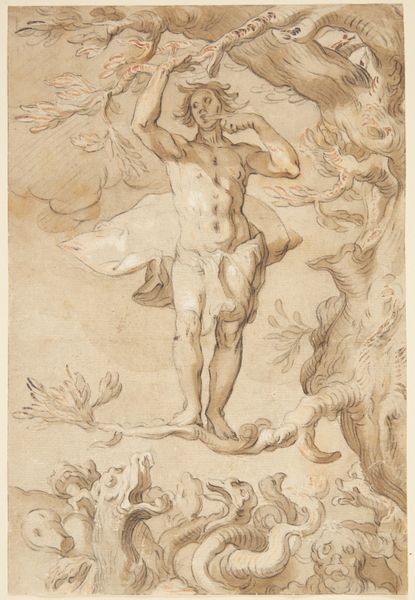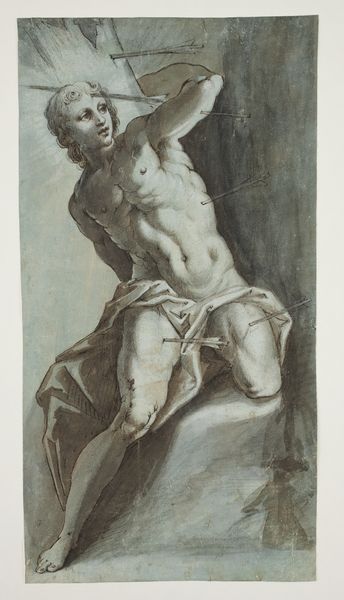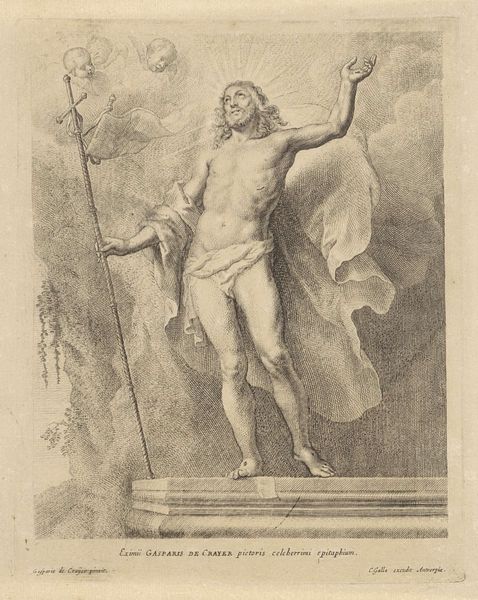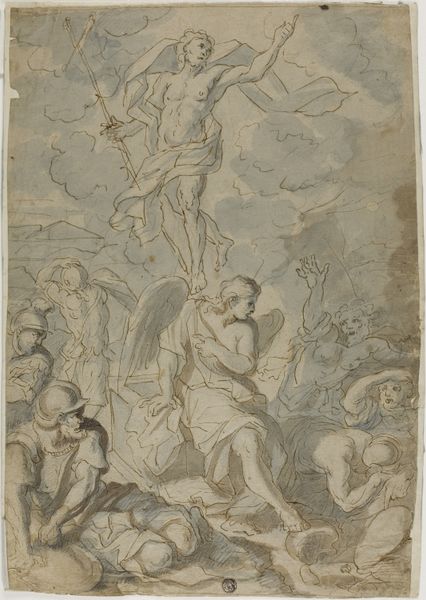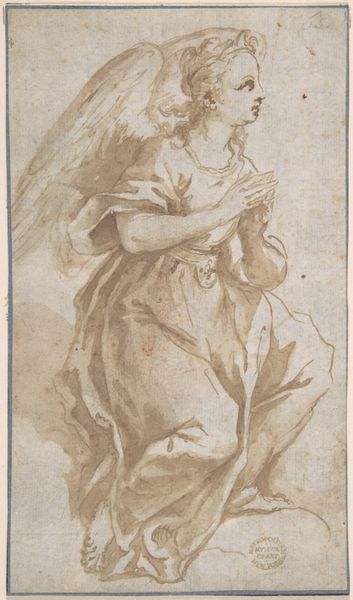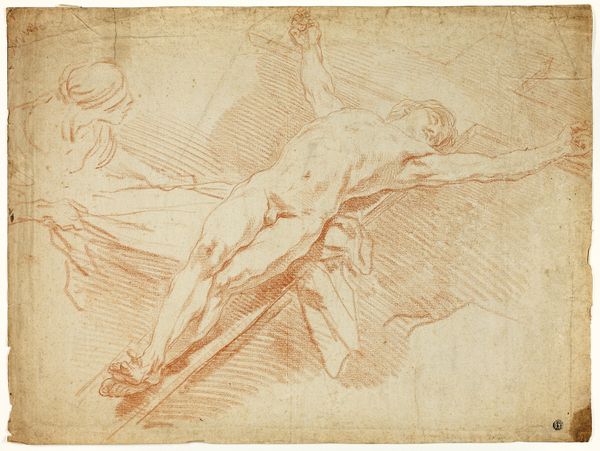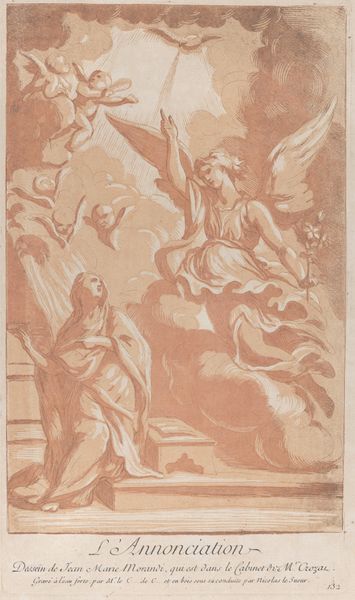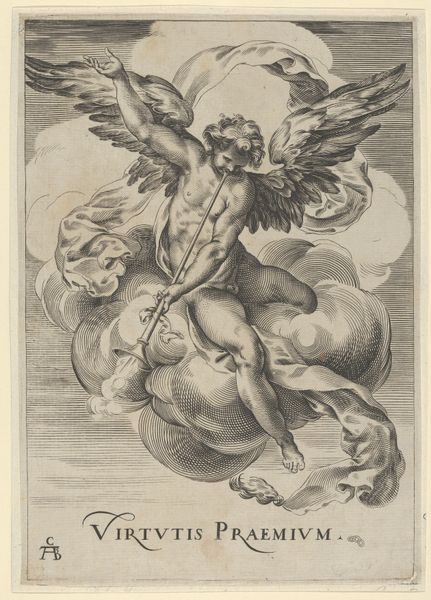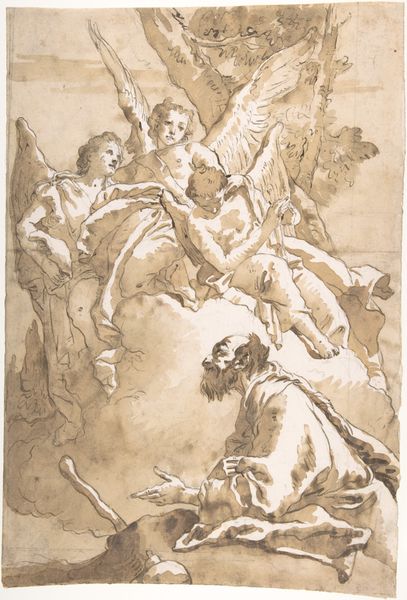
drawing, paper, ink
#
portrait
#
drawing
#
baroque
#
pencil sketch
#
figuration
#
paper
#
ink
#
pencil drawing
#
portrait drawing
#
history-painting
#
nude
Dimensions: 253 mm (height) x 200 None (width) (bladmaal)
Editor: Here we have "St. Michael," a drawing in ink on paper by Pietro Testa, dating from sometime between 1611 and 1650. It gives off this dramatic, swirling kind of energy. What symbols or stories do you see woven into the lines of this Baroque piece? Curator: Look at how St. Michael is rendered. Note the youthful, almost androgynous face, despite the musculature and military garb. This recalls earlier depictions of Apollo and other classical figures. How might this blending of pagan and Christian symbolism have resonated with viewers of the time? Editor: So, by combining those images, did it give the figure more layers of meaning? Curator: Precisely. Consider also the sword. Not just an instrument of war, but a potent symbol of divine justice and protection against evil, deeply ingrained in Western iconography. How does Testa’s rendition either reinforce or subvert these pre-existing associations? Think about the period... Editor: So he is drawing upon a lot of existing ideas about heroism? Curator: Very good! Notice the fall of the robe and its texture, adding emotional drama beyond the static image of victory. Also, the specific Baroque theatricality emphasizes an engagement of all senses for maximum emotional and spiritual impact. What lasting impression does this leave you with? Editor: It makes you think about where the power of these kinds of figures come from. Thanks! Curator: My pleasure. Exploring these continuities helps us understand our collective visual memory, how images retain and transmit cultural values.
Comments
No comments
Be the first to comment and join the conversation on the ultimate creative platform.
